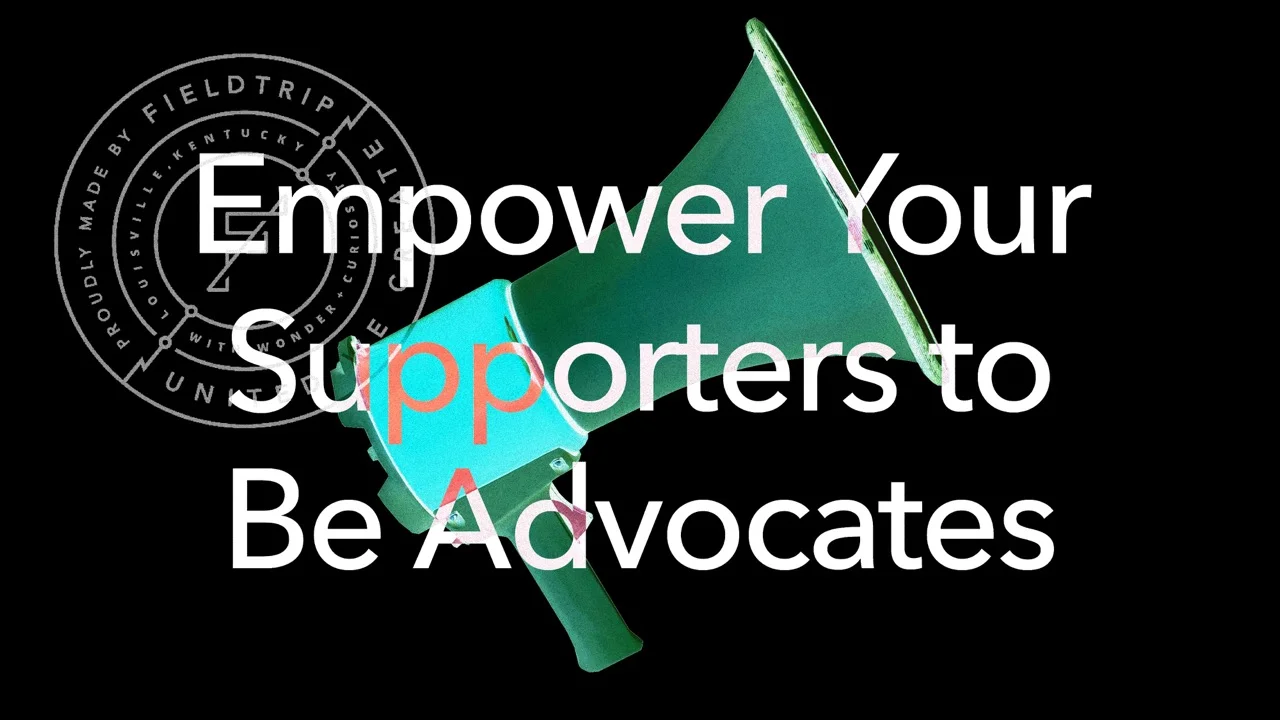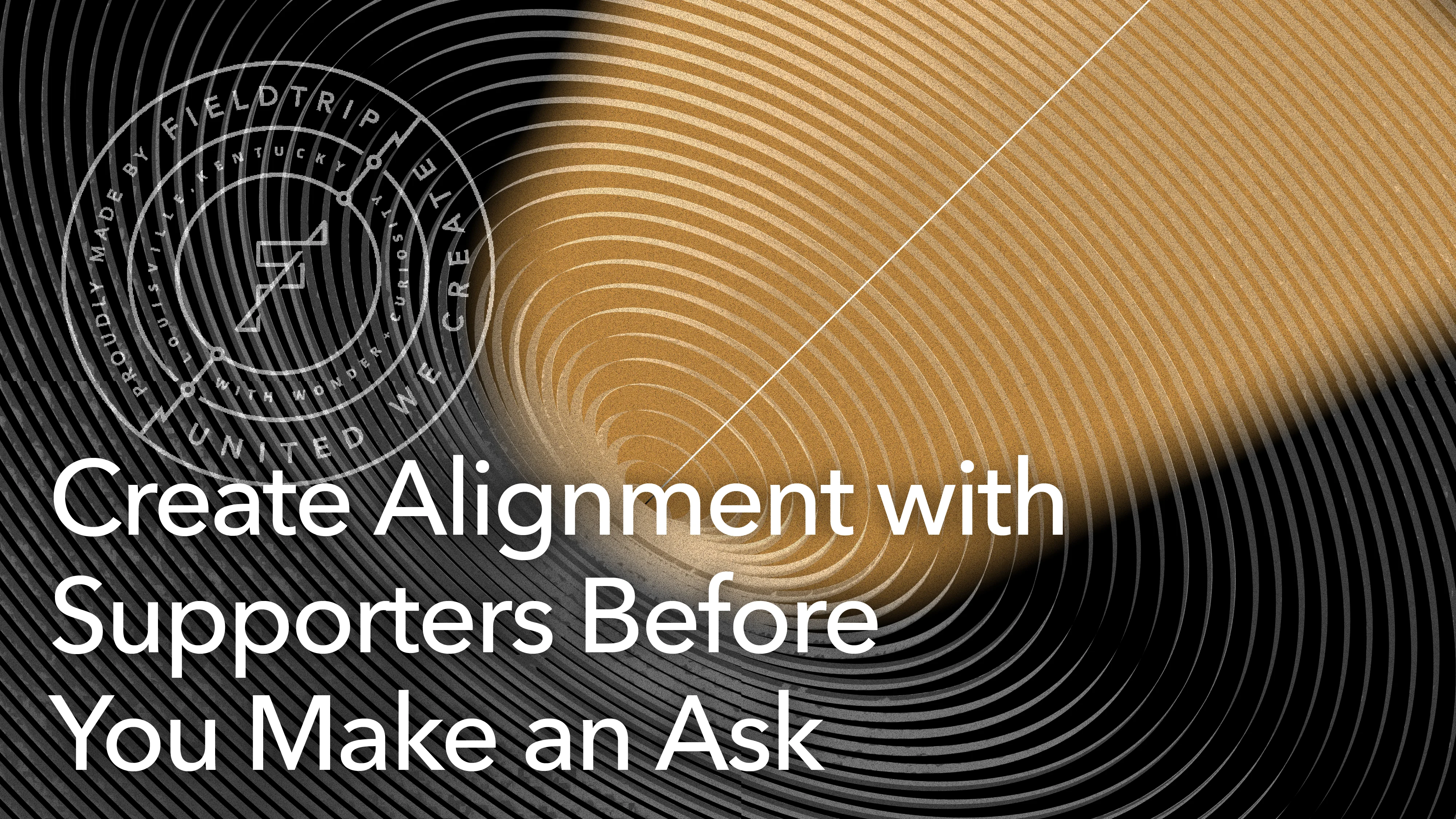Welcome. I’m Jane Pfeiffer, founder and president of Fieldtrip. This is Mission Multiplier. It’s a regular video segment where we focus on how to help nonprofits reduce their largest expense. And that expense is hidden. It’s not on the balance sheet. It’s the cost of lost opportunities because people don’t know you, don’t understand you, don’t think you can help them or don’t understand why they should help you because your mission isn’t connected to their world. And when we bridge that gap, we create a mission multiplier.
Unless you’ve been living under a rock, you’ve heard about A.I. and how it’s coming for our jobs. Well, that’s one school of thought. Another way to think about it is I can’t wait for it to do all the work for me. Or maybe you’re in the third bucket, which is complete and total denial that until someone forces the issue or you have to, you don’t know what to think about it. So you’re just going to keep it over there. What I’m going to do today is break down a very practical application of A.I. and where the value is and where it is not. It is not coming for our jobs, at least not in my lifetime. And I’ll show you why. Recently, Fieldtrip was working with a nonprofit client that works in affordable housing, and this effort that we did with them was what we call our Do It With You program.
Instead of coming, learning, walking away, doing the work and bringing back different iterations for the client’s feedback, we did a series of workshops just about every week for about 20 weeks and built all these elements together, and that resulted in a playbook. As I was putting on the finishing touches of the playbook, I realized that all these assets, like a brand platform messaging, audience definition and competitive analysis, would be great to put it together. If you believed that marketing is needed in nonprofits, if I removed the marketing expert, I was caught with wondering would the executive leaders in the board of directors actually feel that this playbook was helpful and that marketing and communications was so instrumental that they couldn’t let it just sit on a shelf. They had to fill the position or find expertise. What I came away with is really a philosophy, and stating that as a means of if the organization does not say yes to these philosophies, then the following playbook is irrelevant. Let’s just call it what it is. So I looked to the philosophies that we at Fieldtrip have developed over our years of working with nonprofits.
I started with three and they changed a little bit. Now it’s four. As I was trying to put this in writing, I use them a lot when we’re doing models and exercises and in conversations with clients, but I’ve never really written them and then built upon each philosophy in a narrative format. I started and got about 80% of the way through. I understood what it meant, but it just wasn’t punchy enough to really be convincing and to stand in this playbook an ultimatum in a way. To the reader, I wanted it to say that if you can’t say yes to this philosophy, stop reading. We’ve got to work on that belief before any of the subsequent information is helpful. So I turned to chatGPT, and I thought of this video and what a great way it would be to kind of demonstrate what I hear nonprofits and a lot of leaders talking about what they think it is and how it can be used.
I thought I’d play the, “Hey, A.I. is going to replace me, and maybe that’s a good thing because I won’t have to work so hard.” So let me share the different iterations that I did. In the type of thinking where, Hey, A.I. is going to do my work for me or make my work significantly easy, I decided to not feed it anything. I asked “what are four nonprofit marketing philosophies?” First one is authentic relationship building and it goes on to explain. True. Two, strategic targeting and segmentation. Also true. Three, impactful storytelling. And for my least favorite, integrated multichannel approach. Probably the only word that I like less than multichannel is omni channel. But let’s take that fourth point and really read it. Integrated multi-channel approach. This marketing philosophy recognizes the importance of using various channels and touchpoints to reach and engage diverse audiences by integrating traditional and digital marketing strategies such as social media, email marketing events and public relations. The organization maximizes its reach and impact. This approach ensures a cohesive and consistent brand presence across channels, enabling the nonprofit to effectively communicate its message and mobilize supporters.
Did you catch it? What this paragraph is is simply an explanation of what a multichannel approach is. It doesn’t explain why it’s important, why it applies to nonprofit, when you might think it doesn’t, and how to use it, and how to know if you aren’t multichannel. It’s not a philosophy at all. It’s a definition. And then the explanation or vocab term and the definition of that. And when you look at all four of these, it’s to some degree the same story. It’s a hot marketing term or jargon and then an explanation of what that jargon means to me. There was nothing useful here. It might have been helpful if I had not had my own philosophies as kind of a seed copy, and that was looking for a place to start. I wouldn’t use these, but it might prompt exploration and more thinking on one or two of these and then take it from there.
The next prompt that I used is for AI to polish these four nonprofit marketing philosophies as if they were writing an advertising headline. So these four statements are my thoughts. It’s fieldtrip for belief. We believe if these four things are true, then marketing really can be a game changer for your organization. If you can’t subscribe to these, then should we really be doing the work together? Because it’s likely we’re not the right fit or you need to be looking at a different area to improve upon. When I gave the AI these very specific thoughts, it came back with this. It’s a two word statement or close to it, word, and then a brief headline, if you will. This was helpful, but I didn’t take it verbatim because still it didn’t sit right. For example, number three, smart marketing. I don’t like that because it implies there’s dumb marketing. I also don’t like it because the topic that we’re talking about is marketing. To say, smart marketing, it just doesn’t seem to be a direction.
Now let’s look at these side by side in terms of the polished prompts that I got back for polished statements. And then what I ended up using as the opening statement for each of these narratives. So the first, unleashed success, put the beneficiary first and the rest will follow very close to taking the same thing I used unlock instead of unleash. Why? I often talk about nonprofit leaders with this feeling of being stuck. They don’t know where to start. They don’t know what to do. Or they feel trapped because they’re the best kept secret. Unlock felt more like a realistic emotion that a nonprofit leader might face and recognize. Second, make an impact. Share your mission’s power, not just your work. Ignite Change. Inspire with mission impact, not the work. I typically phrase it: ff you’re explaining, you’re losing, you’re losing their time, you’re losing their attention, and you’re losing momentum to create meaningful change. This just boils all that down. I can use that statement in my narrative, but this as a headline is much more concise and stronger. I use many of the same words, but I wanted the impact to be connected to the mission rather than the actual philosophy. Third, smart marketing. I told you what I didn’t like about this and that changed to maximize gains. Marketing is the asset because it gives you an operational edge and it’s a strategic investment. It’s not that there’s smart or bad marketing. It’s that we need to think about marketing as an investment as opposed to an expense. And it got me close, but not quite where I felt it was the right statement. And then finally, bridging lives: connect beneficiary beneficiaries to hearts, minds and wallets. Again, very close. Bridge the gap. I talked so often about closing the gap between audiences. So again, I wanted to stick with gap. And I’ve recognized that, for years I’ve been saying close the gap. Candidly, that’s not possible. If I’m helping an organization who works in affordable housing and they need to close the gap between someone who has never had a reliable place to live and someone who might fund a 52 unit complex, I can’t close that gap. But what I can do is build a bridge between the two audiences so that there is a meeting point. They’ll never have the same lived experiences, the same perspectives, the same mindset, but there can be a connection point. And bridging the gap became the statement that led this fourth philosophy.
From here, I took each of these statements and built upon it in terms of how it applied to this organization. What it meant, how they could tell when they were living this and how they could tell from their marketing work and messaging that it wasn’t being honored. And that was a valuable use of AI. It was a waste of time without original thought. And it was helpful when I gave it thinking that had been refined over time and asked it to just give me a fresh spin, to kind of knock some of the dust loose in my head and see it in a different direction. That’s what I think is a more typical use as we look at air in the future and how nonprofits might use it.
Now, a couple words of caution for AI use. You need to make sure that you’re never submitting any proprietary information from yourself, a client, or especially your nonprofit, because it’s not a secure platform. Even though you have a log in or an account, it’s not private. You can’t even come close to doing that. And remember that anything that it generates is not your property. Now, I changed the prompt, so I originated it. I still feel like that is my property, but I don’t know that I can trademark it. So again, you’ve got to think of this as an iteration, not a final output. Make sure you check the work that’s generated with an internet search to be sure it’s not a direct quote of somebody else’s work. I did that with each of these four statements and I was delighted to see that really there wasn’t anything close. Even some of those key phrases didn’t show up for related content. Yes, there were statements that were similar, but it might be in professional sales or a different category of business. And finally, create and document guidelines for how you’re going to use AI in your content generation for your own organization and for any contractors or freelancers that you use because you don’t want it to come back. That content that you’ve used and put out to the world actually was never yours to begin with or is just embarrassingly too close to another organization’s work. It’d be better to not turn to the tools, so use the tool wisely. And at this time, we’ll say, look forward to seeing you next time.



